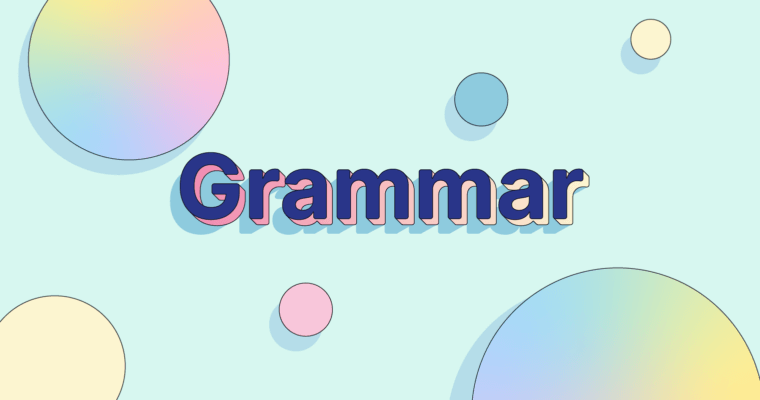
A subject is one of the two main grammatical parts of a sentence or clause (the other is the predicate). The subject is the noun, pronoun, or noun phrase that the sentence is about. It controls the verb of the sentence—either by performing the action that the verb describes or by being described by the verb and the rest of the predicate working together.
When you have two or more nouns or pronouns together operating as a subject, it’s called a compound subject.
What is a compound subject?
A compound subject is two or more nouns, pronouns, or noun phrases acting together as the subject of a clause or sentence. Usually, they are connected by a coordinating conjunction. Here are some examples of sentences with compound subjects:
- Jack and Jill went up the hill.
- Neither Mia nor Ben wanted to go to the library to study.
- Every day this week, the weather or my work has kept me from going for a run outside.
Note that the simple subjects of the sentences above are just the two nouns, without the conjunctions or any extra words like articles or adjectives. So Jack and Jill are the simple subjects of the first sentence; Mia and Ben are the simple subjects of the second; and weather and work are the simple subjects of the third.
How are compound subjects used?
Compound subjects are useful when you want to relate that multiple nouns are performing a single action or when you want to describe multiple nouns that are closely related. They can be found in simple, compound, complex, and compound-complex sentence structures:
- Both canoes and kayaks are available there.
- You can rent canoes and kayaks there, but the shuttle and the campsite have to be booked separately.
- The canoes and kayaks that are available there are usually in good condition.
- The first outfitter that we visited was closed, but after we left there Mick and Bohai told us about another one.
The individual components of compound subjects can be singular, plural, or a combination of the two:
- A jacket and a scarf will keep you warm.
- Sheets and towels can be washed in hot water.
- A dollar bill or some quarters would come in handy for this parking meter.
Compound subjects and verbs
Probably the trickiest thing about using a compound subject in your writing is figuring out what verb form to use with it. As always in English grammar, subject-verb agreement is essential, but with a compound subject, it’s not always obvious whether a singular or plural verb is called for. Here are the general rules to follow.
Compound subjects with and
When the elements of a compound subject are connected with the coordinating conjunction and, that subject is nearly always plural and requires a plural verb:
- The guitar and the piano both need tuning.
- Books and papers were piled on the desk.
- A yo-yo and some puzzles keep my eight-year-old occupied.
There are a couple of exceptions to the above rule. When the parts of a compound subject are joined by and but represent a single concept or entity, they are singular and take a singular verb:
A bagel and cream cheese is one of my favorite breakfasts.
When a compound subject uses and and is modified by each or every, the subject is singular and takes a singular verb:
- Each dog and cat at the shelter is vaccinated.
- Every painting and photograph on the wall was an original.
Compound subjects with or and nor
When a compound subject consists of two singular elements connected by the coordinating conjunction or or nor (often with either or neither), it is singular and needs a singular verb:
- Paz or Miguel leads the meeting most evenings.
- Neither Monday nor Tuesday works for me to have lunch.
When a compound subject consists of two plural elements connected by or or nor, it takes a plural verb:
- Wednesdays or Thursdays are generally better for me.
- Neither Mondays or Tuesdays are usually free for me.
When a compound subject consists of one singular and one plural element connected by or or nor, the verb should agree with the element closest to it:
- Some apple slices or a granola bar is enough to tide Otto over till dinner.
- Neither a granola bar nor some apple slices are enough to eat for dinner after a soccer game.
Compound subject impostors to watch out for
Sometimes a singular subject is modified by a phrase using a connector like along with, as well as, in addition to, or together with. Although this can look like a compound subject and communicate the same idea that a compound subject using and would, it isn’t grammatically compound and therefore takes a singular, not a plural, verb:
The porch as well as the driveway is slippery.
Even trickier and more awkward is when the as well as–type phrase puts a plural noun between the singular subject and the singular verb:
The porch, as well as the steps, is slippery.
Although the above sentence is technically grammatically correct, having the plural noun steps come before the singular verb is probably sounds so off to most people that it’s better to rewrite it with an actual compound subject:
The porch and the steps are slippery.
5 more examples of compound subjects
- Marcus and I are cousins.
- Rabbits and guinea pigs both make good pets.
- Neither cat fur nor dog fur triggers Mai’s allergies.
- Either the homework or the chores are not going to get done tonight.
- Chairs or stools are often set up in the room before we get there.
Compound subject FAQs
What is a compound subject?
A compound subject is two or more nouns, pronouns, or noun phrases acting together as the subject of a clause or sentence. Usually, they are connected by a coordinating conjunction.
What kinds of sentence structures can use compound subjects?
Compound subjects can be found in simple, compound, complex, and compound-complex sentences.
How do you know if a compound subject takes a singular or plural verb?
- Compound subjects using and nearly always take a plural verb.
- Compound subjects with two singular elements connected by or or nor take a singular verb.
- Compound subjects with two plural elements connected by or or nor take a plural verb.
- When a compound subject has one singular element and one plural element connected by or or nor, the verb should agree in number with the part of the subject it is closest to.
Are along with, as well as, in addition to, or together with used to form compound subjects?
No. These connective phrases don’t work like and to create a compound subject, so when they are used to add another noun to a singular subject, only the singular subject has to agree with the verb.






